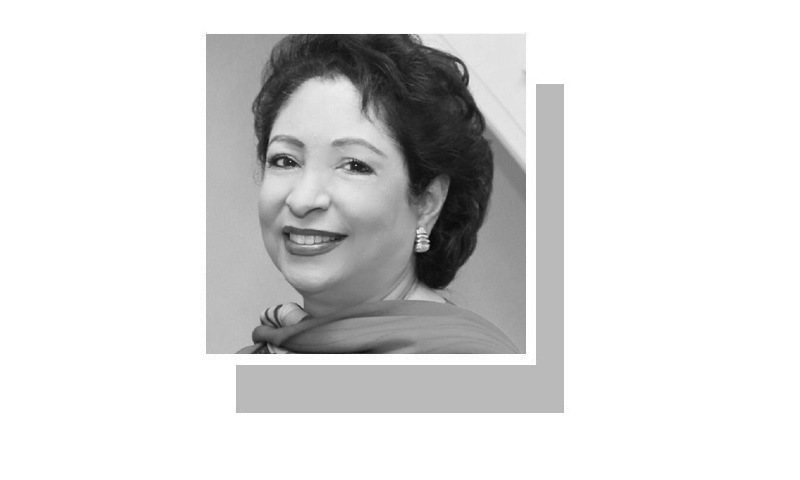By Maleeha Lodhi
Published in DAWN on March 07, 2022
MUCH of Pakistan’s political history has been about governance failures and missed opportunities. Political instability has been endemic with the country alternating between military interventions and civilian rule. Reforms that could have transformed the country and placed its economy on a high-growth and sustainable trajectory were repeatedly postponed as they would have threatened the ruling elite’s privileges and hold on power. Complicating the quest to address persistent economic, governance and security challenges was the impact of global and regional developments.
In fact, the external and internal has been so intertwined in Pakistan’s history as to multiply challenges and leave the country in a constant crisis management mode. The country’s ability to weather global and regional geopolitical storms was repeatedly tested. Dealing with their fallout for protracted periods from a state of economic and political fragility ended up emaciating and exhausting Pakistan.
Now a bold new book seeks to tell the Pakistan story from a new perspective. Mohammed Waseem is among Pakistan’s leading intellectuals and brings his many years in academia to bear on a work rich in insights. His latest book Political Conflict in Pakistan deploys, as its title indicates, the analytical construct of conflict to consider the country’s political experience in multiple dimensions. This is predicated on the hypothesis that political conflict in a postcolonial state like Pakistan is pervasive and the root of “a permanent crisis of governance”. This is because of the gap between the modern state and traditional society, between institutional design and practice and between “a ‘Western’ framework of authority and Islamic norms and practices”. He sees conflict as both disruptive and constructive of the social and political order.
The book draws on sociological perspectives and political science literature to argue that all politics is about conflict. This, he writes, challenges managers of the state. How they deal with contentious issues determines the country’s evolution. Discussing what he calls the “persistent and devastating” clash between two elite groups in Pakistan, the state elite and the political elite, he argues that these groups rest mainly on two power centres, the middle class and political class respectively. “The former is generally identified with the ‘establishment’, led by the army. The latter represents political parties and parliament, which draw on the constitutional edifice as the supreme source of legitimacy.”
Governance failures and the ruling elite’s resistance to reform have marked Pakistan’s political history.
This state of play, he writes, has led to a “bifocal nature of state authority”. The two represent opposing outlooks, visions, worldviews and policy orientations. “The middle-class narrative focuses on the national interest, but the political class’s idiom focuses on the public interest.” These two power centres define what Waseem calls the “mega conflict between the civil and military organs of state”. He offers an in-depth account of how political initiative has shifted between the state elite representing the middle class and the political class symbolised by leaders of political parties that engage in mass mobilisation through electoral activism.
Waseem argues that over the decades the establishment has tried to promote, support and impose its “preferred leadership” through the electoral process denuding the country of genuine public representatives. He sees a long history of manipulation of elections by extra-parliamentary forces to shape outcomes and says “the establishment’s preference for client parties contributed enormously to a weak and vulnerable party system in Pakistan”. He backs this up by naming numerous parties the establishment created and then supported.
In a chapter titled ‘An Establishmentarian Democracy’ he deals with an issue as relevant today as in the past as it is among the country’s enduring fault lines. Asserting that democracy has been a major source of conflict he examines whether Pakistan’s present hybrid regime is democratic only in form and not substance. To support his claim that Pakistan is what he calls an ‘establishmentarian democracy’ Waseem first compares its experience to India’s and then seeks to show that the establishment was able to significantly shape the contours of democracy while the weak role of parliament contributed to this. Some may find this an overly cynical and sweeping view that accords the establishment more controlling power over the political system than is merited. But few would disagree with Waseem’s central proposition that the military’s dominant role “hampered the growth of democracy” or that civil-military conflict has been a constant theme. He acknowledges that “while the constitutional tradition has been too weak to stop military takeovers, it has been too strong to allow generals to rule in their own name for long”.
The book explores many other themes that have been recurrent in Pakistan’s political history including challenges of the federal project, sub-nationalist movements and Islamisation. There is an interesting analysis of partition in terms of two competing paradigms, one faith-based and the other resting on a shared past. It also delves into why conspiracy theories are embedded in the mindset of educated Pakistanis. Whether the left or right, ‘liberal’ or religious ‘thinking minds’, Waseem sees them all “display paranoia about international conspiracies to pressure, bully, corner or undo Pakistan”.
The book has a sweeping scope in examining the many facets of Pakistan’s story. But it would also have benefited from consideration of the country’s economic experience as that is inextricably linked to politics. After all, competition over scarce resources also shaped politics, influenced civil-military relations and fuelled centre-province tensions. A recurrent theme in Pakistan’s history, since at least the 1980s, has been the threat posed to financial and political stability by the budgetary resource crisis. An oligarchic elite relied on ‘borrowed’ growth and bailouts to address the country’s chronic financial crises and resisted meaningful reform that included taxing itself and its support base. The power elite also assumed ‘rentier’ characteristics: using political office to access state resources and thus acquire wealth and unearned income.
The enigma of successive civilian and military governments living beyond their means can only be explained in terms of a privilegentsia averse to measures that would either have eroded its position or threatened its interests. This has contributed to miring Pakistan in perpetual financial crisis with virtually every government in the past four decades leaving the economy in much worse shape for its successor.






